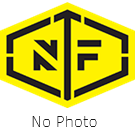|
|
| (2 intermediate revisions by one other user not shown) |
| Line 1: |
Line 1: |
| {{Tool|room=3D Printing Room | model = | work envelope = | link to manual = | related tools = | trainers = Kerry Stevensen | knowledge keepers = | SDS link = | SWP link = | consumables }}
| | {{Tool |
| | |room=3D Printing Room | model = | work envelope = | link to manual = | related tools = | trainers = Kerry Stevensen | knowledge keepers = | SDS link = | SWP link = | consumables }} |
| | The Creality Lizard is a general purpose 3D scanner. It can scan both freehand and on a turtable. Note that some objects (small with many holes/gaps) and materials (shiny, transparent) will be difficult to scan. |
Latest revision as of 14:47, 2024 June 15
| 3D Printing Room Precautions apply
|
|
You will be working in the 3D Printing Room . In order to keep safe from hazards created by you or other workers using any of the tools in this room, the following precautions apply in addition to any other precautions:
- In general, it's a good idea to watch your print until the first few layers are complete. 3D printing can be somewhat unreliable and prints often fail over the first few layers.
- SLA resin is very messy and poses several hazards that can accumulate over time. If you're working near the resin printers, do not touch your face or eyes and wash your hands afterwards.
- If you're working with the resin printers, wear protective nitrile gloves (available at the cleaning workstation). When pouring resin, wear goggles (with complete face seal) to avoid splashback injury.
- Wear safety glasses when removing snapaway supports.
- SDS are available in the SDS Binder near the door.
- Always label your filament rolls with your full name. Unlabelled rolls will be considered community use.
- Put finished prints in the finished prints bin.
- If you need to unload someone else's filament, please tuck in the ends to avoid tangling.
|
Instructions:Creality Lizard Tabletop 3D Scanner doesn't exist yet
The Creality Lizard is a general purpose 3D scanner. It can scan both freehand and on a turtable. Note that some objects (small with many holes/gaps) and materials (shiny, transparent) will be difficult to scan.
